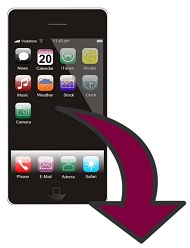The Jakarta handset is expected to be unveiled at the Mobile World Congress 2014.
The partnership between BlackBerry and Foxconn, which was first announced in December of last year, is about to produce its very first release of mobile devices, which will be debuted at the MWC 2014.
This answers the question that many people had about the next BlackBerry 10 based device.
According to Terry Gou, the chairman of Foxconn, when asked about the newest mobile devices from the struggling manufacturer, “We are working with them to design a new device, and we will showcase multiple devices at the trade show in Barcelona in February.” The specs regarding the handset have not been revealed, as it appears that the companies are attempting to keep them secret until the official launch.
The prediction is that the mobile devices will be lower end, and will be the BlackBerry Jakarta.
This lower end gadget will not be featuring a physical keyboard, as has been desired by many of the most loyal among the last lingering BlackBerry device owners. Instead, it will have a much more cost effective full touchscreen display. The goal is predicted to be to provide consumers with a new option to be able to purchase a touchscreen smartphone without a large price tag.
Many have been greatly interested in the fact that it seems that Gou has been talking about several mobile devices, and not a single gadget. This has spawned a great deal of speculation as to whether this means that BlackBerry will be launching more than one new handset, or if there will be more that are being manufactured by Foxconn, which could also suggest that Firefox OS gadgets will also be working their way into the mix.
It is believed that the “Jakarta” mobile devices will be slated to hit the emerging markets midway through the spring, this year, in April or May. This will still be at least a couple of months after its initial unveiling at the massive international technology news event. This description of the expected gadgets aligns well with the direction that the partnership had intended to take throughout 2014 and into the future.
At the same time, Android seems to be snatching up every bit of territory lost by Apple.
With an extremely broad range of different mobile devices now available around the world, technology news headlines have been placing a growing focus on the shares that are held by the various top operating systems, particularly iOS and Android.
Every year, it appears that Android is taking a little bit more of the share, while iOS slowly slides.
As smartphones improve their penetration in countries all over the world, the broader availability of mobile devices based on Android, and their general better affordability has ensured that the latest technology news has been an ever growing overall market share for smartphones based on that operating system. It has also helped to ensure that Android is able to maintain its position in the dominant spot.
Recent technology news research has shown that in the United States, Android is headed upward.
Kanatar Worldpanel has just released the results of some of its latest research, which has shown that from December 2012 to December 2013, the Android market share in the United States increased to 50.6 percent, which represents a rise of 4.4 percent. Comparatively, iOS smartphones saw a drop in their total share, to bring it to 43.9 percent, which represents a loss of 5.8 percent during that same span of time.
The gap in the market share is even greater in the parts of the globe where Apple hasn’t yet truly established any significant foothold, and where Android is by far the leader. Many Asian and European countries are greatly dominated by Android and, despite attempts that Apple has made to crack into those regions, it has never managed to make its way in with most consumers, particularly among those whose financial resources are limited.
Two solid examples of the growth that Android has been making are in China and Spain. According to the Kantar technology news, there was a growth in China’s market share from 2012 to 2013 that brought it to 78.6 percent. In Spain, the figure was 86.2 percent. Previously, Apple has been focusing on the markets in North America over those in Asia and Europe, which is likely a major contributor in the market share difference.



